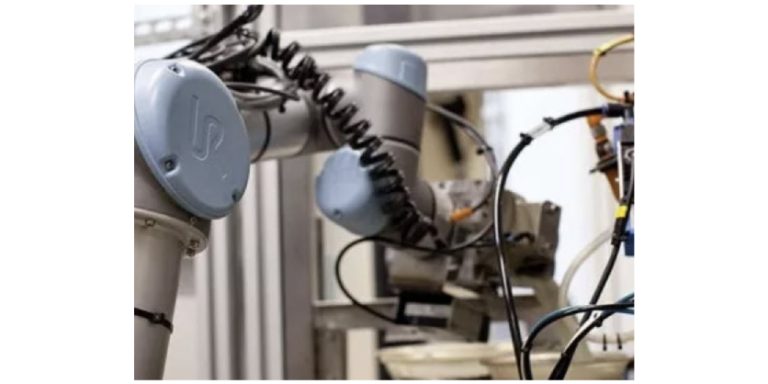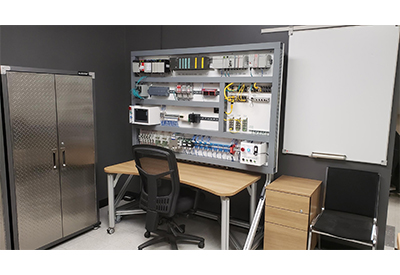5 Priorities Trending in Manufacturing Today

June 1, 2022
By Gerry Abbey, Product Marketing Manager, Plex Systems
The test of global change has exposed the brittle nature of systems, processes, and supply chain solutions that had historically measured as “good enough.”
A recent global survey of 321 manufacturers has shed light on the biggest industry obstacles and punctuated the need for agility, technology adoption, and improved processes to respond to market adversity. The results of this survey make up the 7th Annual State of Smart Manufacturing Report – the most robust edition yet.
This study from Plex Systems, a Rockwell Automation company, in collaboration with Hanover Research, uncovers the current state of smart manufacturing, the challenges manufacturers are facing, and expectations for the future of the industry.
To solve for the problems of today and other dynamics yet unknown, technology – specifically smart manufacturing – is the key.
What is smart manufacturing?
According to MESA International, smart manufacturing is defined as “the intelligent, real-time orchestration and optimization of business, physical, and digital processes within factories and across the entire value chain. Resources and processes are automated, integrated, monitored, and continuously evaluated based on all available information as close to real time as possible.”
As you already know, the manufacturing landscape is changing constantly. Technologies once touted as excessive and needless are now crucial to success.
“There’s never been a more pivotal time in manufacturing. The pandemic exposed the depth of challenges that manufacturers are facing, including supply chain disruption, skilled worker shortages, and risk mitigation,” says Tessa Meyers, Vice President and General Manager of Plex Systems, a Rockwell Automation Company. “The time for action is now. Forward-looking, informed leaders are making the decisions that will pave the way to success this year, while also stepping back to assess where those decisions will lead the company in five, ten, and fifteen years.”
Where does your team rank in these popular categories?
1. Smart Manufacturing: 83% of survey respondents believe smart manufacturing is a key to their organization’s future success. Technology and automation are powering the leaders in today’s manufacturing space while driving the next generation of manufacturing innovation. Have you started exploring smart manufacturing for your organization? This year’s survey results build on Plex’s previous reports, reaffirming that technology adoption continues to accelerate, and previously over-hyped technologies are now solving the industry’s critical challenges.
2. Employee retention: 84% of respondents ranked employee retention as “very” or “extremely” important. How is employee retention going for you and your team? Are you struggling with the skilled worker shortage? While manufacturers grapple with continuing challenges, they are also taking advantage of opportunities for change, particularly staffing and working arrangements. This pivot is opening a wider talent pool and creating a more retention-friendly environment. As remote work spreads, cloud technology will be a vital component to power this agile approach to work.
3. Digital Transformation: 28% of manufacturers are evaluating smart technology adoption but haven’t started their digital transformation yet. Where are you at with your digital transformation journey? Modularization of software is gaining traction and lowering the barriers to entry. With increasingly modular smart manufacturing technology options available, investment and implementation can be simple, seamless and cost-effective. These incremental investments unlock value quickly and can be used to fund subsequent projects, acting as building blocks for smaller manufacturers or those without large capital investment plans.
4. Risk Mitigation: 61% of respondents do not have a risk mitigation plan in place. Risk mitigation continues to evolve, and it’s essential to advance with it. Most organizations approach security similarly to how a person might view going to the doctor. Some people adhere to regular check-ups to ensure good health and catch potential issues. Others opt for the wait-and-see approach. Which side does your organization prefer when it comes to risk mitigation and security? Is your system health a top priority? How important are data protection, processes, and uptime?
5. Supply Chain Planning: 70% of respondents are using supply chain planning systems that rely on spreadsheets and manual processes. However, that won’t be enough going forward. What does supply chain planning look like in your organization? No matter how sophisticated more manual types of solutions might be, they cannot handle the level of computation that a dedicated supply chain technology tied to machine learning can.
Create Your Technology Adoption Action Plan
The 2022 State of Smart Manufacturing report will help you benchmark your technology usage and uncover best practices to help your organization stay competitive and thrive not just today or tomorrow, but next year and every year thereafter.
What is standing between your team and your business goals? And how could technology and smart manufacturing pave the path to success? Hearing from peers around the globe about their smart manufacturing adoption can help you benchmark your technology usage and discover new solutions for the future.















